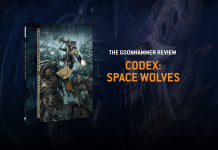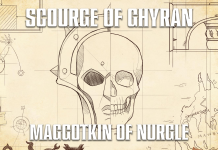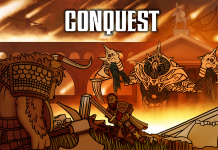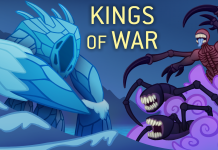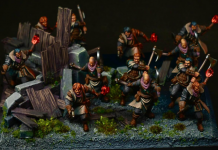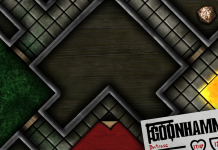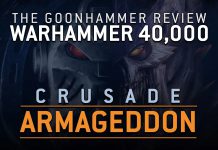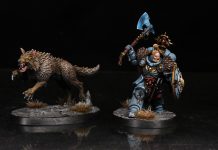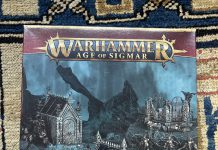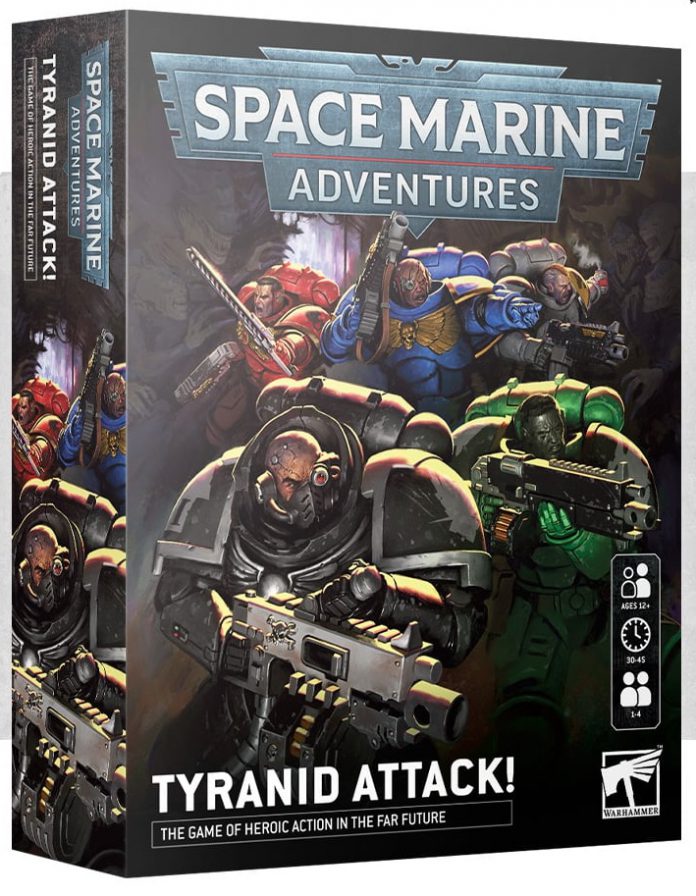I’m a fan of Warhammer 40,000. I have children. I have friends who like board games but don’t find wargaming attractive. Maybe I just stumbled across the gateway I’ve been looking for.
Space Marine Adventures: Tyranid Attack! is a cooperative board game that aims to bring the grimdark 40K universe to the family table without too much difficulty, and, importantly, without too much cost.
Let’s get into it. I’ll outline what you get in the box, how it plays, and share why I think this has earned its place on my shelf.

What You Get in the Box
My first impressions of this game were positive, because the box design is delightful and so often missed by wargaming products. It’s an organiser’s dream…but wait, I’ve missed something.
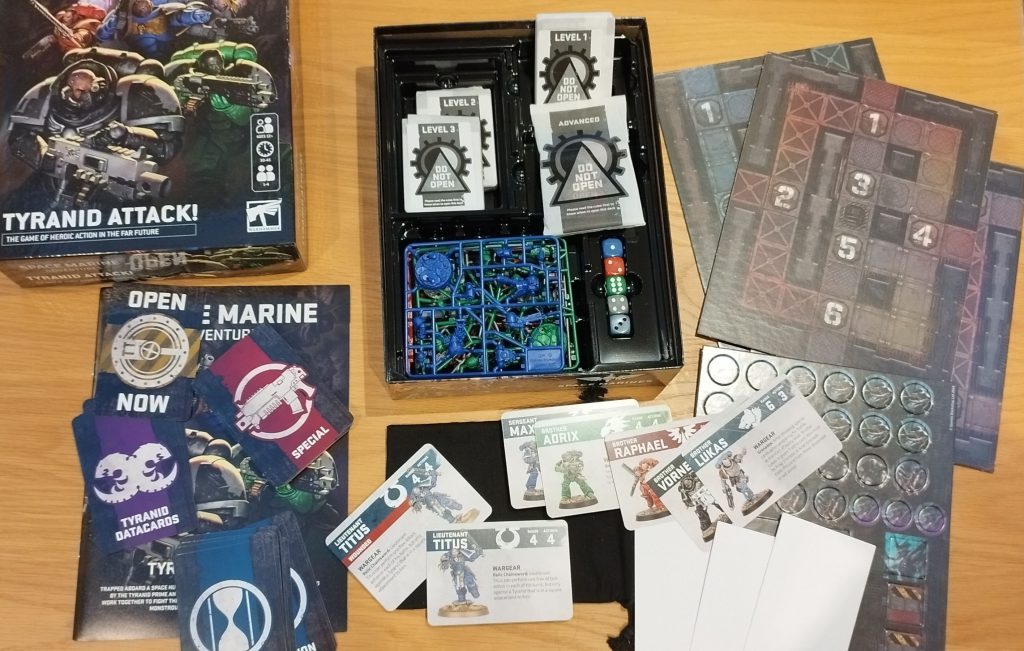
My first impression of the game was actually: That’s interesting, it’s an envelope. The rules book, rather than coming neatly loose or in shrink-wrap, come in an envelope sealed so tightly that I genuinely questioned whether I was making a mistake in opening it. I want to know the glue product they used because there was no way to open it up without tearing the thing apart…and so began my envelope experience. There’s some design committee deep within the Warhammer structure that apparently has a profound love for envelopes.
There are five separate decks of cards, each one inexplicably tucked into its own envelope, four of which are covered with explicit instructions telling me not to open them. The “Do Not Open” command is particularly unusual for the Level 1 deck because it’s impossible to play the game without opening it. It got me wondering whether this is one of those games you can only play once, but that’s not the case at all. There are even three seemingly random envelopes with no clear purpose. It’s difficult to criticise something I don’t understand, so I’ll leave it saying that if you enjoy envelopes you’ll enjoy opening up this box.

Envelope oddities aside, the box itself is beautifully constructed. The decks of cards all sit neatly in their own place, there’s a nice bag to store the high-quality card tokens in, but the pièce de résistance is the approach they’ve taken to storing the miniatures. Each of the five space marine models has its own slot that holds it in place, suspended horizontally over an open space. It’s satisfying in the way that a soft-closing drawer is satisfying. Unlike so many wargaming boxes storage is provided, and supremely delightful storage at that.

The rule book is succinct and sufficient, fully illustrated and with a quick reference on the back cover. Lovely. There are different coloured dice, one for each space marine character. The cards are pleasing to the eye and to the hand. Everything serves a purpose, with the exception of some odd cards instructing you to not open the envelopes you’ve had to open to reveal them. Don’t worry, I think I’m over it. The entire visual and tactile experience is positive from beginning to end.
Which brings us to the miniatures themselves. The Warhammer experience for so many people begins and ends with the minis, and the quality is pretty consistently extraordinarily high. Perhaps that quality could have been allowed to drop for something reportedly aimed at twelve year-olds (more on that in a bit), but that’s not the case at all. The box comes with five unique space marine models, on sprues and ready to be painted, the sculpts as detailed as any of my standard space marine models. The coloured plastic gives it away but with paint on you’d never tell the difference.
They’re push-fit, claiming you won’t need any tools or glue but for your own sanity please at least use snips to get them out of those sprues. The sprue connections are pretty large so you’ll have some burrs left on there, and the mould lines aren’t bad but you know what it’s like when you know they’re there. The strap for one of the weapons felt like the most fragile connection point to me and I’m not brave enough to try forcing that with my thumb, but the only breakage I had ended up being one of the push-fit connection points so I ended up using glue anyway.
I’ve got four kids and they each loved picking out their first space marine. Their personal introduction to the Warhammer 40K universe has come for them in assembling a seriously high quality space marine model. Each comes with its own unique stance and loadout, and there’s an option to choose between helmeted or bare heads. Of course they all chose the helmeted option – who isn’t going to do that on their first space marine?
How It Plays
Let’s talk gameplay. Tyranid Attack is a straightforward dungeon crawler at its core, where the aim is simple: Complete the objective and escape from a section of a space hulk, while surviving the relentless Tyranid onslaught. The box suggests an age rating of 12+, but the rules are extremely simple. My seven-year-old picked it up immediately and didn’t want to stop playing!
Gameplay is driven by a turn-taking mechanic based on a shuffled deck of cards. Each space marine gets two full turns each round, which generally consist of moving towards the objective and attacking the Tyranids. The Tyranids get six in total, most of which lead to the swarm growing. Each card dictates whose turn is up next, which makes each round fun and unpredictable, but if there’s something that the kids are going to argue about this will be it. There’s a reason most board games just go clockwise around the table. That said, we haven’t had any issues after the first moment of one kid saying, “My turn now,” and me having to point out that no, we needed to draw the next card. Trust the process, because things tend to work themselves out, and the randomness adds some pleasing variety.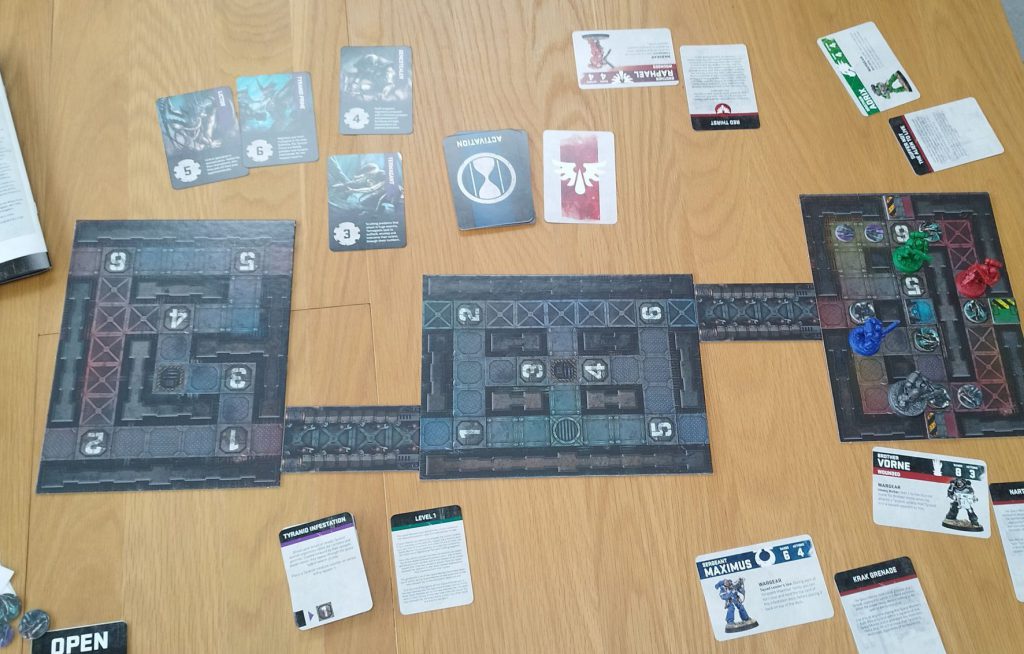
I’m a fan of narrative co-op games because I feel they’re well-designed for family play. In Tyranid Attack the unique and attractive abilities that each space marine has gives the game tactical variety and asymmetry without overly complicating things. If you want to add a bit of a challenge for older players, the game includes advanced objectives and a sequence of levels with their own mission brief. You can also easily make the game easier by simply taking out some Tyranid activations from the deck, making it a genuinely versatile game that’s suitable for all ages (providing you don’t mind the presence of a chainsword on the table).
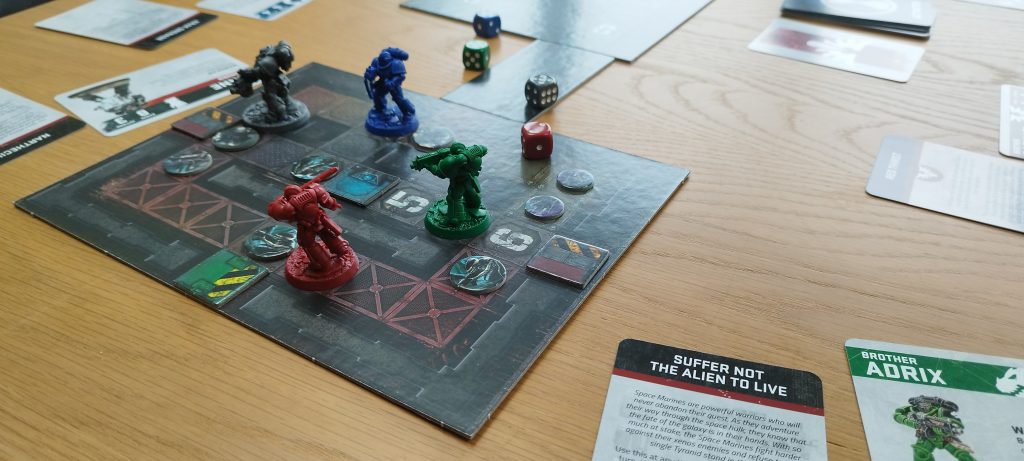
This also feels like a game that’s open for customisation. The mechanics are so simple that a house rule here or there could do things like allowing for a fifth player, forcing the odd reroll, creating boss levels and so on. There are narrative objectives but the heart of the game is a crunchy dungeon crawl, so if the basic “fight off the swarm” mechanic starts feeling a bit repetitive, alternative scenarios and objectives could inject a sense of variety and keep things fresh. You could even steadily replace the cardboard tokens with your standard Tyranid models if you wanted to increase the immersion.
What Stood Out to Me
Thematically, Tyranid Attack manages to capture the essence of Warhammer 40K for the hardcore fan without bogging players down in the full depth of the lore-heavy, grimdark backstory. Each of the five space marines represents one of the popular chapters (Ultramarines, Salamanders, Blood Angels, Space Wolves and Iron Fists) but you’re not going to get the depth of a Black Library novel here. Most kids or newcomers will probably recognise that Blood Angels = the red model and that’s about it, but you do get a sense of the brutal, never-ending conflict of the 40K universe if that’s what you’re after. It’s a genuinely fun entry point, giving enough context to feel like a real 40K mission, but not so much that you need a doctorate in Imperial history to follow along.
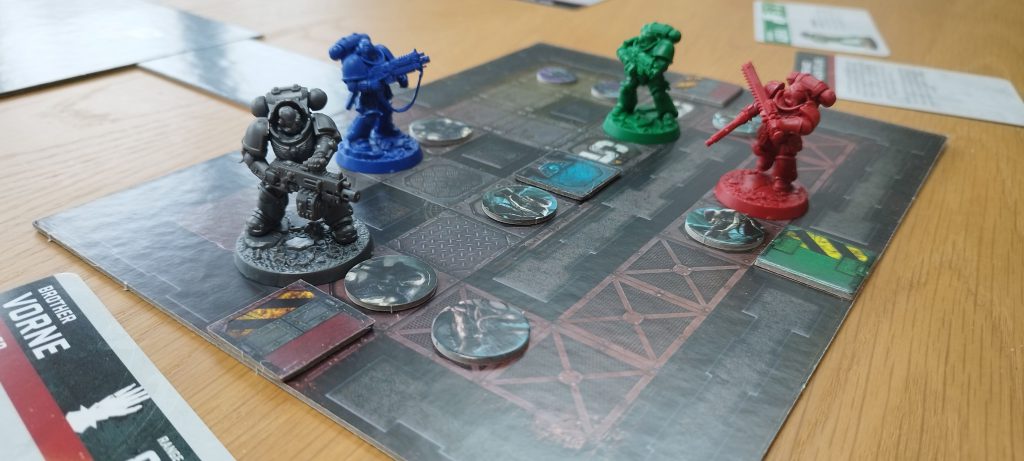
Of course, its scope is fairly limited. You won’t get the sprawling campaigns or complex narratives that might come with a dedicated 40K RPG. But for what it is, it does the job really, really well. It’s a self-contained, family-friendly grimdark-lite skirmish in a deeply satisfying box. Someone looking for a way to dip a toe into Warhammer’s brutal universe without diving headfirst into the usual complexity and cost could do worse than this game (or you could buy this excellent book designed to do just that). If you remember Space Hulk from the 90s it’s basically that, albeit a tad more streamlined.
I’ll conclude by saying that my kids want to play it, and I want to play it with them. That says something, I think. I’m expecting to get a good number of plays out of it, and am looking forward to seeing how my kids make it their own. I think it stands on its own as a fun, cooperative game, and it’s also an accessible introduction to the 41st millennium. Who knows, it might proved the sort of small yet satisfying taste of the vast, apocalyptic setting that will spark the beginning of a lifelong obsession.
Have any questions or feedback? Drop us a note in the comments below or email us at contact@goonhammer.com. Want articles like this linked in your inbox every Monday morning? Sign up for our newsletter. And don’t forget that you can support us on Patreon for backer rewards like early video content, Administratum access, an ad-free experience on our website and more.


